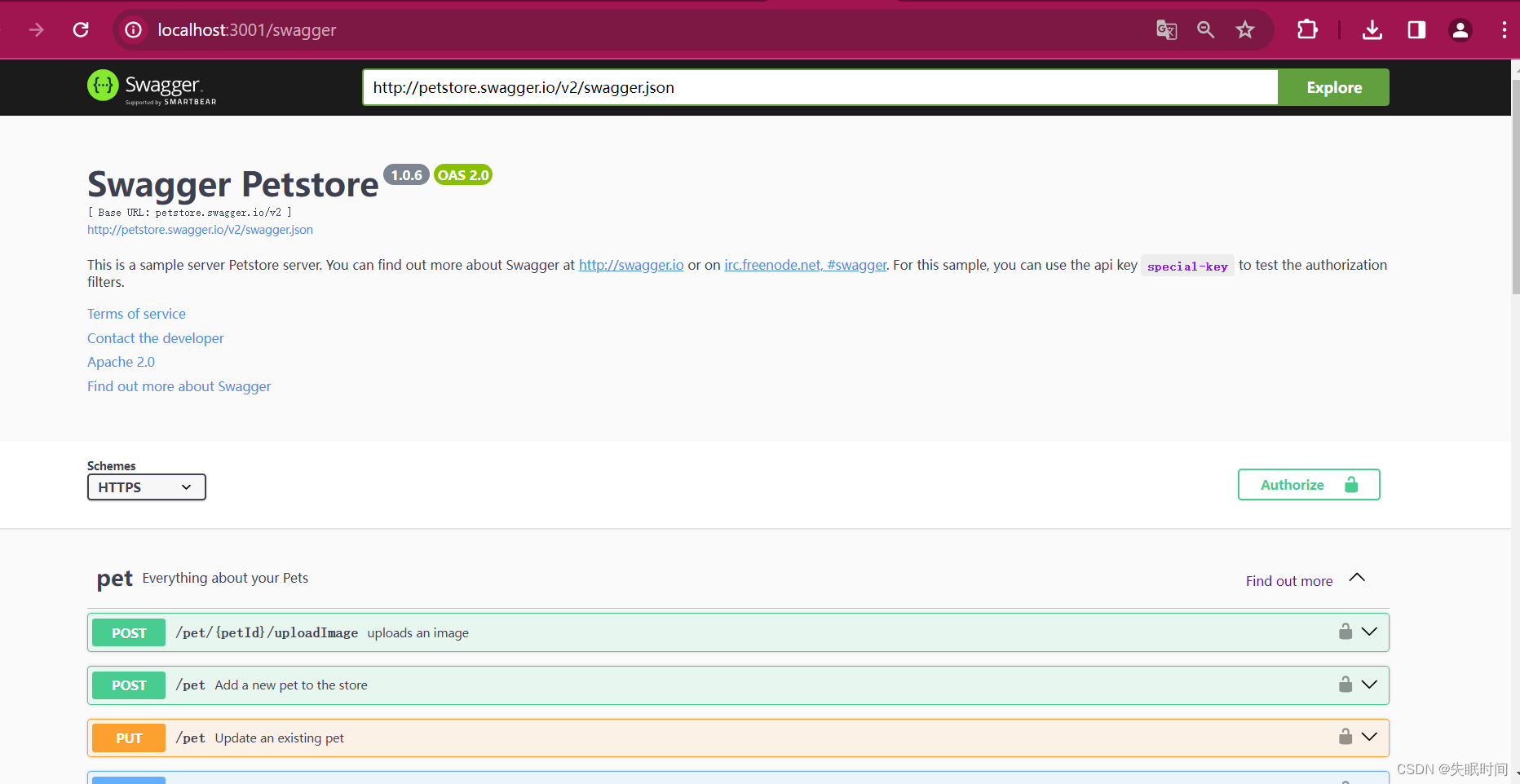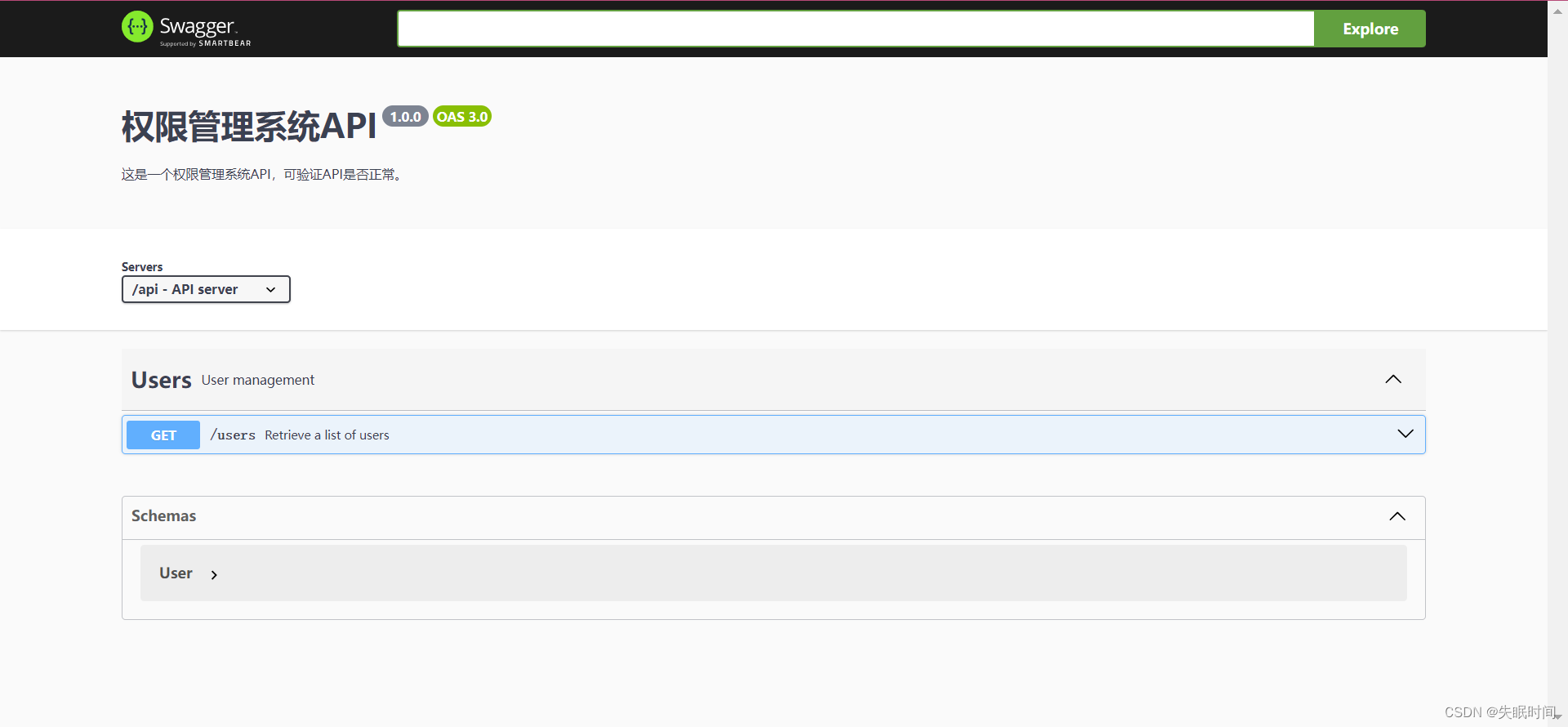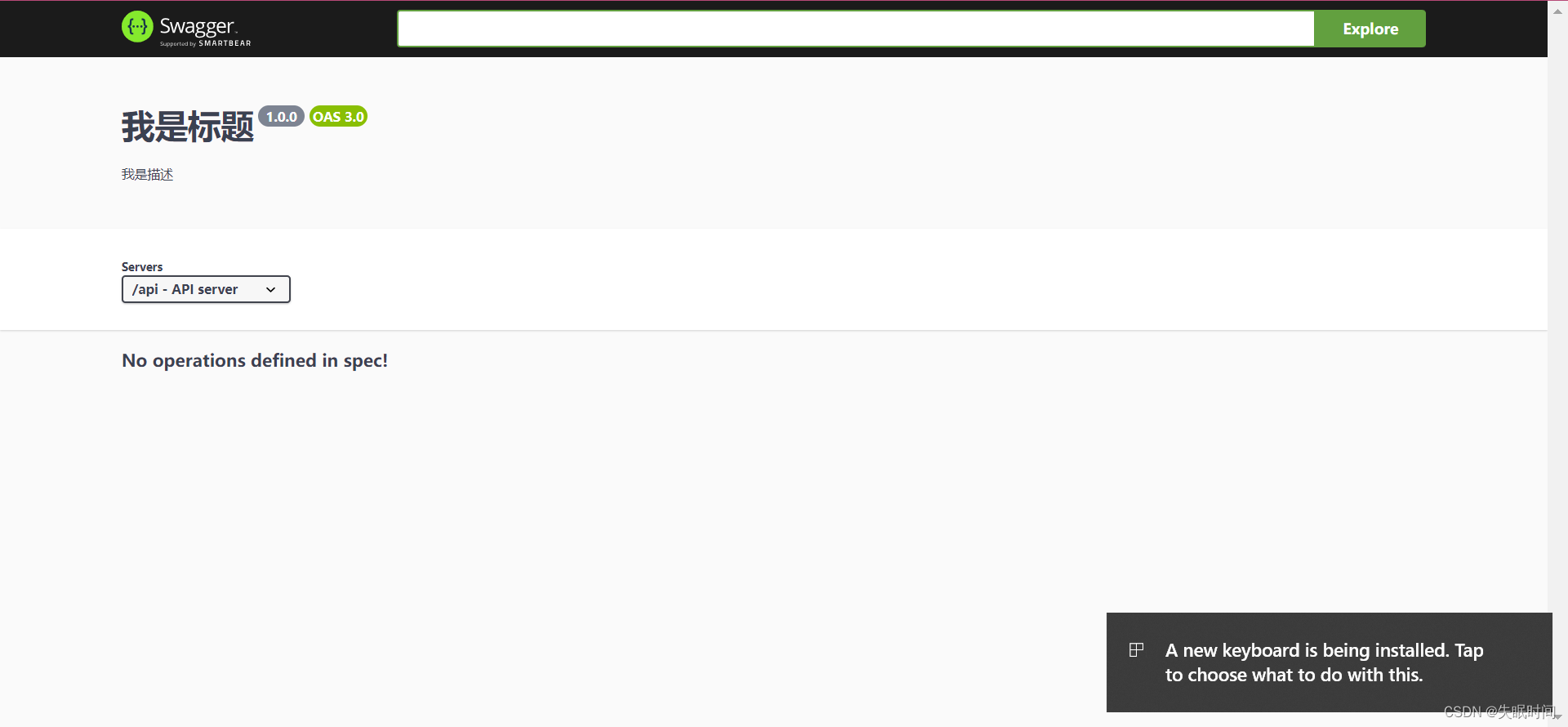手动搭建koa+ts项目框架(swagger文档篇)
发布时间:2023年12月20日
文章目录
一、安装依赖
- swagger-jsdoc
读取您的JSDoc带注释的源代码并生成OpenAPI (Swagger) 规范 - koa2-swagger-ui
根据配置生成swagger界面
npm i swagger-jsdoc koa2-swagger-ui -S
and
npm i @types/swagger-jsdoc -D
二、直接使用json文件生成
无需使用swagger-jsdoc,直接根据json配置数据生成
import Koa from 'koa';
import { koaSwagger } from 'koa2-swagger-ui';
const app = new Koa();
app.use(
koaSwagger({
routePrefix: '/swagger', // host at /swagger instead of default /docs
swaggerOptions: {
url: 'http://petstore.swagger.io/v2/swagger.json', // example path to json
},
}),
);
app.listen(3001);

三、根据对应api注释生成
使用swagger-jsdoc读取每个接口前面的注释,生成对应json数据后生成
新建swagger.ts文件
项目配置文件新增 /config/swagger.ts
import swaggerJSDoc from 'swagger-jsdoc';
import fs from 'fs'
const options = {
definition: {
openapi: '3.0.1',
info: {
title: '我是标题',
version: '1.0.0',
description: '我是描述',
},
//servers的每一项,可以理解为一个服务,实际项目中,可自由修改
servers: [
{
url: '/api',
description: 'API server',
},
],
},
apis: ['./routes/*.ts'],
};
export const swaggerSpec = swaggerJSDoc(options);
// 如果有Swagger规范文件转TS的需求,可在此处保留Swagger规范文件到本地,方便使用
fs.writeFileSync('./dist/swagger.json', JSON.stringify(swaggerSpec, null, 2));
注意
apis相对于项目更目录而言
新建./routes/users.ts文件
在/src/routers新建user.ts文件
const router = require('koa-router')()
import Koa from 'koa'
// import Router from 'koa-router'
// const router = new Router();
/**
* @swagger
* tags:
* name: Users
* description: User management
*/
/**
* @swagger
* components:
* schemas:
* User:
* type: object
* properties:
* id:
* type: integer
* description: The user ID.
* name:
* type: string
* description: The user's name.
* email:
* type: string
* description: The user's email.
* required:
* - id
* - name
* - email
*/
/**
* @swagger
* /users:
* get:
* summary: Retrieve a list of users
* tags: [Users]
* responses:
* 200:
* description: A list of users.
* content:
* application/json:
* schema:
* type: array
* items:
* $ref: '#/components/schemas/User'
*/
router.get('/users', async (ctx: Koa.Context) => {
const users = [
{ id: 1, name: 'userName', email: 'email.com' },
];
ctx.body = users;
});
export default router
入口文件引入对应数据
可使用以下两个方式
import Koa from 'koa';
const Router = require('koa-router');
import { koaSwagger } from 'koa2-swagger-ui';
import swaggerSpec from '../config/swagger';
import usersRoutes from '../routes/users';
const app = new Koa();
const router = new Router();
router.use('/api', usersRoutes.routes(), usersRoutes.allowedMethods());
app.use(
koaSwagger({
routePrefix: '/swagger', // host at /swagger instead of default /docs
swaggerOptions: {
spec: swaggerSpec as Record<string, unknown>,
},
}),
);
app.use(router.routes()).use(router.allowedMethods());
const PORT = process.env.PORT || 3001;
app.listen(PORT, () => {
console.log(`Server is running at http://localhost:${PORT}`);
});
或者
import Koa from 'koa';
const Router = require('koa-router');
const swaggerUI = require('koa2-swagger-ui').koaSwagger;
import swaggerSpec from '../config/swagger';
import usersRoutes from '../routes/users';
const app = new Koa();
const router = new Router();
router.use('/api', usersRoutes.routes(), usersRoutes.allowedMethods());
router.get(
'/swagger',
swaggerUI({
routePrefix: false,
swaggerOptions: {
spec: swaggerSpec,
},
})
);
app.use(router.routes()).use(router.allowedMethods());
const PORT = process.env.PORT || 3001;
app.listen(PORT, () => {
console.log(`Server is running at http://localhost:${PORT}`);
});
编译构建或者实时编译后
访问http://localhost:3000/swagger

如果swagger.ts文件的 apis配置有误会出现下图提示

如有启发,可点赞收藏哟~
文章来源:https://blog.csdn.net/weiCong_Ling/article/details/135079887
本文来自互联网用户投稿,该文观点仅代表作者本人,不代表本站立场。本站仅提供信息存储空间服务,不拥有所有权,不承担相关法律责任。 如若内容造成侵权/违法违规/事实不符,请联系我的编程经验分享网邮箱:chenni525@qq.com进行投诉反馈,一经查实,立即删除!
本文来自互联网用户投稿,该文观点仅代表作者本人,不代表本站立场。本站仅提供信息存储空间服务,不拥有所有权,不承担相关法律责任。 如若内容造成侵权/违法违规/事实不符,请联系我的编程经验分享网邮箱:chenni525@qq.com进行投诉反馈,一经查实,立即删除!
最新文章
- Python教程
- 深入理解 MySQL 中的 HAVING 关键字和聚合函数
- Qt之QChar编码(1)
- MyBatis入门基础篇
- 用Python脚本实现FFmpeg批量转换
- 不浪费原料的汉堡制作方案(LeetCode日记)
- 【Python 千题 —— 基础篇】元组的不可修改性
- 如何在 EF Core 中使用乐观并发控制
- 运维工程师常用的ChatGPT通用提示词模板
- 在使用Python 3中的循环时如何使用break、continue和pass语句
- 解决 Git:ssh: connect to host github.com port 22: Connection timed out 问题的三种方案
- 2023。
- 请解释<component :is=“item.icon“ />这句代码含义
- 【Vue2 + ElementUI】更改el-select的自带的下拉图标为倒三角,并设置相关文字颜色和大小
- 忘记密码mysql 8.2重置root密码|macos+linux